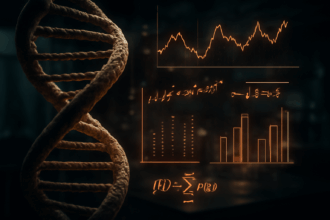Introduction to Forensic Kinship Analysis
Forensic kinship analysis is a critical discipline where genetics meets legal, humanitarian, and personal needs. It applies genetic principles to establish biological relationships, supporting legal proceedings, forensic investigations, and personal identity searches. Through advanced DNA profiling, scientists can now statistically assess not only parentage but also sibling, grandparent, avuncular, and distant family relationships.
- Introduction to Forensic Kinship Analysis
- The Genetic Basis of Kinship
- Genetic Markers in Kinship and Paternity Testing
- Autosomal Short Tandem Repeats (STRs):
- Y-Chromosome STRs
- X-Chromosome STRs
- Single Nucleotide Polymorphisms (SNPs)
- Mitochondrial DNA (mtDNA)
- Human Leukocyte Antigen (HLA) Markers
- Comparison Between commonly used Genetic markers:
- Methodologies and Technologies in Forensic Kinship Testing
- Traditional Methods and Blood Group Systems
- PCR-Based Methods and Commercial Kits
- Next-Generation Sequencing (NGS) and Massively Parallel Sequencing (MPS)
- Non-Invasive Prenatal Paternity Testing (NIPPT)
- Shared Inheritance & Identity by Descent (IBD)
- Statistical Measures and Coefficients in Kinship Analysis
- Inbreeding Coefficient
- IBD States and k-Coefficients
- Kinship Coefficient (Φ) and Coefficient of Relationship (r)
- Expected Values for Key Relationships
- Allele Sharing Patterns in Sibling-Based Testing
- 2-Allele Sharing Dominance in Full-Sibling Profiles:
- Allele Frequency Variation Across CODIS Loci:
- Implications for Kinship Test Accuracy:
- The Statistical Framework: Likelihood Ratio (LR)
- Focus on Paternity Testing: The Paternity Index (PI)
- Peternity Index (PI) as a Specific LR
- Obligate Paternal Allele (OPA)
- Calculating Numerator (X)
- Calculating Denominator (Y)
- Step-by-Step PI Calculation Summary (Trio Case)
- Population Genetics in Calculations
- Allele Frequencies & Databases:
- Handling Rare Alleles:
- Hardy-Weinberg Equilibrium (HWE):
- Population Substructure & Theta (θ) Correction:
- Handling Complex Scenarios
- Mutations:
- Degraded and Limited DNA Samples
- Motherless Paternity Testing
- Identical Twins
- Distant and Complex Relationships
- Combining Evidence and Final Interpretation
- Legal and Ethical Considerations
- Broader Kinship Applications
- Conclusion
Applications of Kinship Analysis
While paternity testing remains the most recognized form of kinship analysis, its impact is far broader:
- Missing persons identification: Linking unidentified remains to biological relatives.
- Inheritance disputes: Verifying biological ties in contested estate cases.
- Immigration: Confirming family relationships for visa or citizenship purposes.
- Disaster victim identification (DVI): Reuniting families after mass casualty events.
Kinship analysis provides crucial evidence Evidence is any form of proof, such as objects, materials, or scientific findings, presented to establish or disprove a fact in a legal proceeding. It is used to reconstruct events and link or exclude individuals Read Full Definition in child custody, criminal investigations, humanitarian efforts, and personal ancestry searches. Accurate and rigorous analysis is essential, as results affect legal rights, financial obligations, and an individual’s sense of identity.
Evidence is any form of proof, such as objects, materials, or scientific findings, presented to establish or disprove a fact in a legal proceeding. It is used to reconstruct events and link or exclude individuals Read Full Definition in child custody, criminal investigations, humanitarian efforts, and personal ancestry searches. Accurate and rigorous analysis is essential, as results affect legal rights, financial obligations, and an individual’s sense of identity.
Evolution of Kinship Testing
Early kinship testing methods relied on traditional techniques like blood group typing, serological markers, and hemoglobin electrophoresis. While these approaches provided some evidentiary value, they lacked the precision needed for determining complex or definitive relationships.
The development of DNA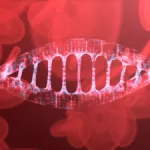 DNA, or Deoxyribonucleic Acid, is the genetic material found in cells, composed of a double helix structure. It serves as the genetic blueprint for all living organisms. Read Full Definition analysis—particularly Short Tandem RepeatA short tandem repeat is a microsatellite with repeat units that are 2 to 7 base pairs in length, with the number of repeats varying among individuals, making STRs effective for human identification purposes Read Full Definition (STR) profiling—revolutionized kinship testing by offering vastly superior discrimination power. Further advancements, including Y-chromosome short tandem repeat (STR) markers, X-chromosome markers, Single Nucleotide Polymorphisms (SNPs), and mitochondrial DNA (mtDNA) analysis, have expanded forensic capabilities even further.
DNA, or Deoxyribonucleic Acid, is the genetic material found in cells, composed of a double helix structure. It serves as the genetic blueprint for all living organisms. Read Full Definition analysis—particularly Short Tandem RepeatA short tandem repeat is a microsatellite with repeat units that are 2 to 7 base pairs in length, with the number of repeats varying among individuals, making STRs effective for human identification purposes Read Full Definition (STR) profiling—revolutionized kinship testing by offering vastly superior discrimination power. Further advancements, including Y-chromosome short tandem repeat (STR) markers, X-chromosome markers, Single Nucleotide Polymorphisms (SNPs), and mitochondrial DNA (mtDNA) analysis, have expanded forensic capabilities even further.
Today, kinship analysis employs highly sensitive and statistically robust DNA profiling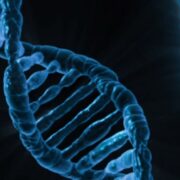
Details about these methods are further explored in the following sections
The Genetic Basis of Kinship
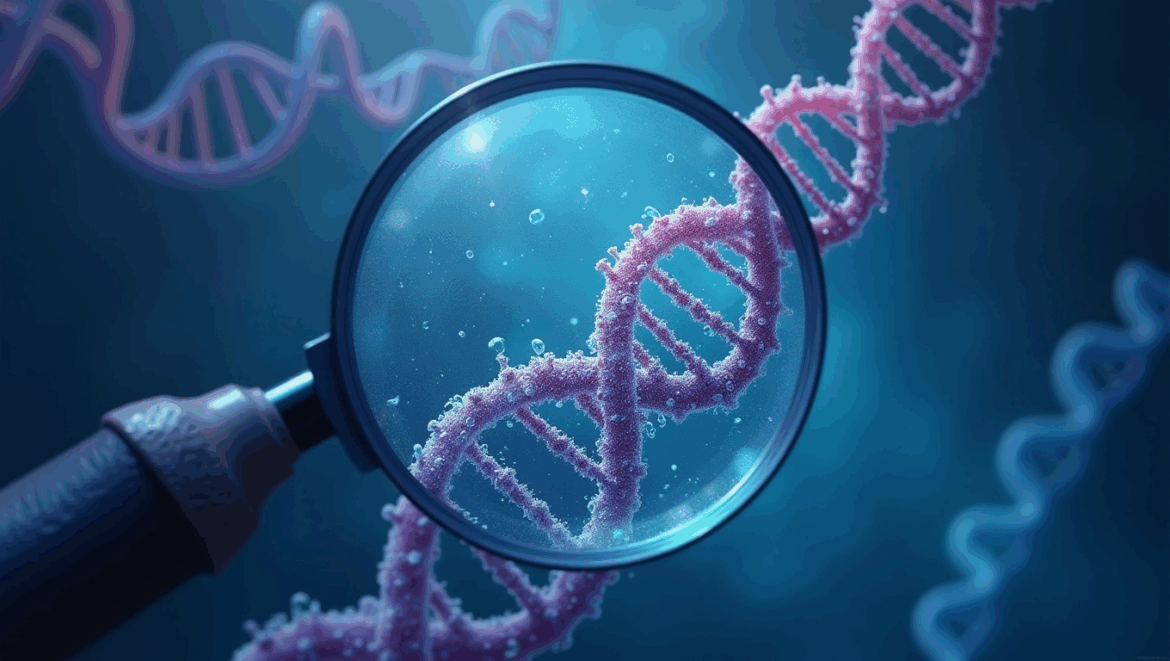
Kinship analysis relies on the fundamental principle of heredity: biologically related individuals share more DNA than unrelated individuals because they inherit genetic material from common ancestors. Each person receives approximately half of their nuclear DNA from their biological mother and half from their biological father. As genetic material is passed down through generations, predictable patterns of similarity emerge and become statistically detectable by comparing specific regions of DNA.
The degree of DNA sharing decreases systematically with increasing genealogical distance:
- Parent-child pairs share exactly 50% of their DNA,
- Full siblings share about 50% on average due to random segregation,
- Grandparents and grandchildren share 25%,
- First cousins share 12.5%, and so forth.
At a finer level, kinship testing leverages Mendelian inheritance principles, particularly through Short Tandem Repeat (STR) analysis. At each locusA locus is the precise position of a gene on a chromosome. Different alleles of the same gene occupy the same locus. Read Full Definition, a child inherits one allele from each parent. In paternity testing, alleles
Alleles are different forms of a gene resulting from mutations or variations in the DNA sequence or gene expression. They can be dominant (expressed with one copy) or recessive (expressed only with two copies). Read Full Definition present in the child but absent from the mother must match those of the alleged
 Alleged is a term used in legal contexts to describe an accusation or claim that has been made against an individual but has not yet been proven or confirmed. Read Full Definition father—referred to as “obligate paternal alleles.”
Alleged is a term used in legal contexts to describe an accusation or claim that has been made against an individual but has not yet been proven or confirmed. Read Full Definition father—referred to as “obligate paternal alleles.”
While these inheritance patterns are highly reliable, rare mutation events—typically paternal and involving single-step changes—must be considered, as they can affect the interpretation of kinship results.
Genetic Markers in Kinship and Paternity Testing
To detect and quantify these patterns of shared inheritance, forensic scientists analyze specific locations, or ‘loci’, within the genome
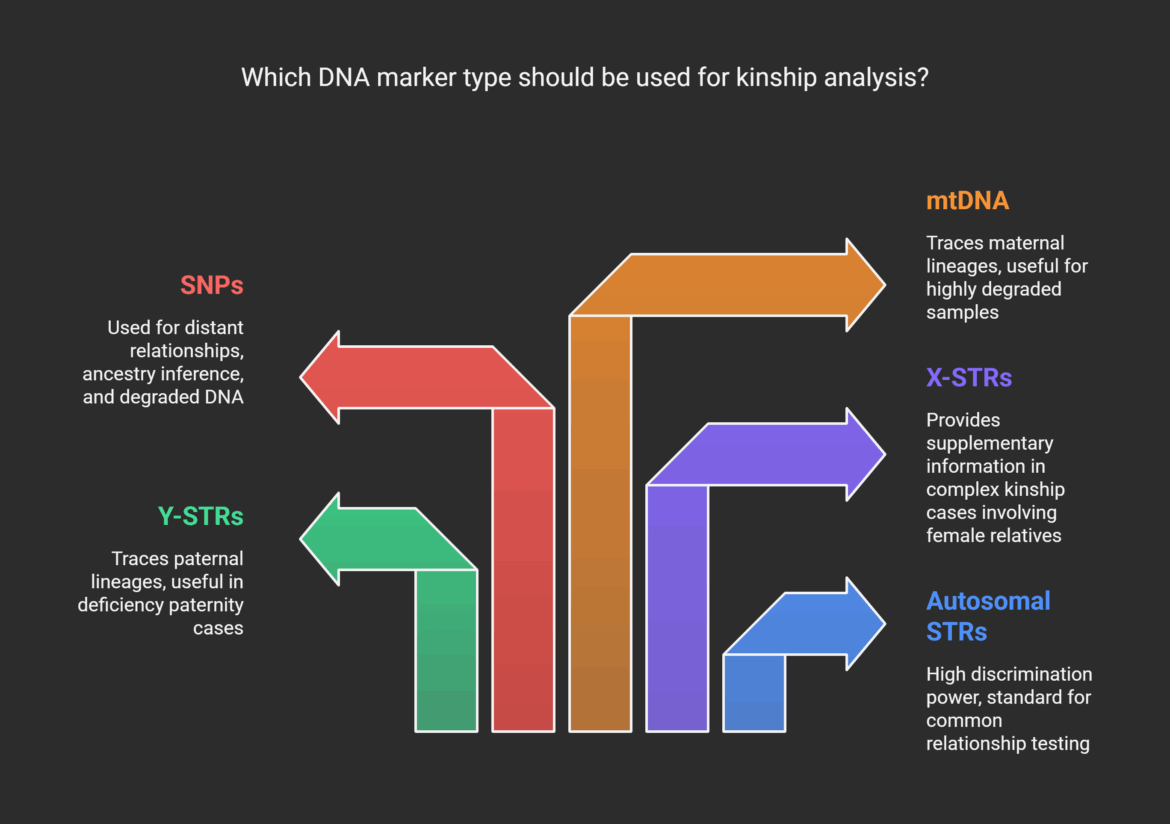
Genetic markers used in Kinship Analysis.
Autosomal Short Tandem Repeats (STRs):
STRs remain the most discriminating markers for kinship and paternity testing. These highly polymorphic regions allow for the reliable resolution of relationships across various scenarios, including classic trio paternity cases, motherless paternity testing, and sibling verification. In standard trio cases, conclusive results are typically achieved using 15 to 20 STR loci.
The CODIS core set, initially 13 loci and later expanded to 20, greatly enhanced discrimination power. Increasing the number of loci improves sensitivityIn the context of laboratory equipment or analytical techniques, the term "sensitive" describes the capability of a machine or method to detect even very small amounts or concentrations of a substance. Sensitivity is a quantitative Read Full Definition and reduces error rates in sibling and distant kinship analysis. Statistical calculations, such as the Paternity Index (PI) and Kinship Index (KI), quantify the likelihood of biological relationships.
STRs are advantageous due to several characteristics: they offer an abundance of potential markers, are amenable to automation, and only require fragment lengths of 60-80 bp. This makes them particularly valuable for challenging forensic samples. However, even expanded STR panels may be limited in cases of very distant kinship.
Y-Chromosome STRs
Y-STRs provide a paternal lineage perspective, passing almost unchanged from father to son. They are crucial in male-specific testing, resolving mixtures of male and female DNA, and tracing paternal ancestry. While traditional Y-STR panels offer stable haplotypes, Rapidly Mutating (RM) Y-STRs significantly improve differentiation among closely related males, distinguishing 42% of father-son and 62% of brother pairs compared to much lower rates with conventional Y-STRs.
Y-STRs are especially useful for forensic samples involving small quantities of male DNA, but they identify membership in a lineage rather than direct individual relationships.
X-Chromosome STRs
X-STRs offer unique advantages in complex kinship scenarios where autosomal or Y-STRs are insufficient. Due to their distinct inheritance, males inherit one X chromosome
It is particularly valuable in scenarios where the application of autosomal (A-STR) and Y-chromosomal STR (Y-STR) markers falls short in addressing complex situations and kinship analyses that encompass extensive and incomplete pedigrees. New tools, such as the Argus X-12 QS kit and FamilinkX software, have enhanced the reliability of X-STR-based analysis.
Single Nucleotide Polymorphisms (SNPs)
Single-nucleotide polymorphisms (SNPs) provide an alternative when dealing with degraded or limited DNA samples, due to their short amplicon sizes. In forensic contexts, SNPs are used for identity testing, tracing lineage, predicting ancestry, and estimating phenotype. Although SNPs are valuable supplements for kinship analysis, distinguishing distant relatives remains challenging.
Emerging approaches, such as microhaplotypes—clusters of linked SNPs under 300 nucleotides—show promise for improving kinship resolution, particularly in challenging cases involving full or half-siblings.
Mitochondrial DNA (mtDNA)
Mitochondrial DNA passes maternally without recombination, making it a stable marker for tracing maternal ancestry across generations. Its high copy number per cell and persistence in degraded samples make mtDNA particularly valuable for forensic analysis, though its discriminatory power is limited, as unrelated individuals may share common haplotypes.
Modern forensic mtDNA testing often involves sequencing the entire mitochondrial genome to assign individuals to specific haplogroups, which aids in determining maternal lineages but emphasizes exclusion over positive identification.
Human Leukocyte Antigen (HLA) Markers
HLA markers offer a robust alternative when autosomal STR testing alone is inconclusive, especially in cases with missing parental samples or complex pedigrees. High-resolution HLA typing using Massively Parallel Sequencing (MPS) has demonstrated success in improving kinship determinations, significantly boosting likelihood ratios when combined with STR results.
HLA genotyping has proven critical in civil and forensic cases where traditional STR evidence falls short, particularly by resolving grandparentage and deficiency cases with high confidence.
Comparison Between commonly used Genetic markers:
| Marker Type | Description | Key Use in Kinship |
|---|---|---|
| Autosomal STRs | Short Tandem Repeats located on the non-sex chromosomes (1-22). These are regions with short DNA sequences (e.g., GATA) repeated multiple times. The number of repeats defines the allele (e.g., ’10’ repeats, ’11’ repeats). They are highly polymorphic (many alleles exist in the population) and exhibit high heterozygosity, making them excellent for individualization and relationship testing. | Standard for paternity, maternity, siblingship, and most other common relationship testing scenarios due to their high discrimination power and established analysis methods. |
| Y-STRs | STRs located on the Y chromosome. As the Y chromosome is passed largely unchanged from father to son, Y-STR profiles are shared among males of the same paternal lineage. | Primarily used for tracing paternal lineages, invaluable in deficiency paternity cases (e.g., testing a brother or father when the alleged father is unavailable), identifying male components in mixtures. |
| X-STRs | STRs located on the X chromosome. Inheritance patterns are more complex (males have one X, females have two). | Provide supplementary information in complex kinship cases, particularly useful in scenarios involving female relatives, such as testing potential half-sisters who share the same father or paternal grandmother-granddaughter links. |
| SNPs (Autosomal) | Single-nucleotide polymorphisms are variations at a single DNA base position (A, T, C, or G). They are the most abundant type of genetic variation. | Used in large panels (thousands or millions) for kinship analysis (especially for more distant relationships), ancestry inference, and identification. Powerful with microarray or sequencing technologies, and potentially better for degraded DNA than longer STRs. |
| mtDNA (Mitochondrial DNA) | Small, circular DNA found in mitochondria (cellular powerhouses) is inherited solely down the maternal line. Contains highly variable ‘hypervariable regions’. Exists in high copy numbers per cell. | Primarily used for tracing maternal lineages. Extremely useful for highly degraded samples (e.g., old skeletal remains, hair shafts without roots) where nuclear DNA may be absent or too damaged. Cannot distinguish between individuals on the same maternal line (e.g., mother, child, siblings). |
The data Information in analog or digital form that can be transmitted or processed. Read Full Definition from these markers are typically generated using techniques such as Polymerase Chain ReactionA method of making multiple copies of a DNA sequence involving repeated reactions with a polymerase. Read Full Definition (PCR) to amplify the specific loci, followed by Capillary Electrophoresis (for short tandem repeats, or STRs) or DNA Sequencing/Microarrays (for single nucleotide polymorphisms, or SNPs, and mitochondrial DNA, or mtDNA) to determine the alleles present. The high variability of these markers (especially STRs) and the development of extensive population databases detailing allele frequencies are crucial for the statistical calculations that follow.
Information in analog or digital form that can be transmitted or processed. Read Full Definition from these markers are typically generated using techniques such as Polymerase Chain ReactionA method of making multiple copies of a DNA sequence involving repeated reactions with a polymerase. Read Full Definition (PCR) to amplify the specific loci, followed by Capillary Electrophoresis (for short tandem repeats, or STRs) or DNA Sequencing/Microarrays (for single nucleotide polymorphisms, or SNPs, and mitochondrial DNA, or mtDNA) to determine the alleles present. The high variability of these markers (especially STRs) and the development of extensive population databases detailing allele frequencies are crucial for the statistical calculations that follow.
Methodologies and Technologies in Forensic Kinship Testing
Traditional Methods and Blood Group Systems
Before DNA technology, forensic kinship testing relied on serological markers such as ABO, HLA, MNS, Kells, and hemoglobin electrophoresis—methods still used in resource-limited settings due to affordability. However, their limitations are evident. A comparative study in Burkina Faso found that, of 14 trios, traditional testing indicated 10 inclusions and three exclusions, but DNA STR analysis confirmed only five actual inclusions and nine exclusions, highlighting the superior accuracyIn scientific and measurement contexts, "accuracy" refers to the degree of proximity or closeness between a measured value and the true or actual value of the measured quantity. Accuracy indicates how well a measurement reflects Read Full Definition of DNA-based methods.
Despite these limitations, understanding local blood group distributions remains important. For instance, an Iraqi study found that blood group O was the most common (52.3%) and AB the least common (3.18%), with 97.7% Rh positivity—valuable data for national health services.
PCR-Based Methods and Commercial Kits
Polymerase Chain Reaction (PCR) methods form the standard for forensic DNA testing, with CODIS-validated STR kits requiring minimal DNA input and offering high statistical power. Commercial kits, such as the QIAseq Microhaplotype panel (which detects haplotypes with as little as 0.8 ng of DNA) and the Investigator DIPplex kit (targeting 30 autosomal INDELs and amelogenin), have expanded forensic capabilities, providing reliable options for kinship and individual identification across diverse populations.
Polymerase Chain Reaction (PCR) methods remain the gold standard in forensic DNA analysis, offering high sensitivity, accuracy, and minimal requirements for DNA input. Modern STR testing relies on validated kits, such as PowerPlex® Fusion, GlobalFiler®, and VeriFiler® Plus, which amplify an expanded set of loci, including all CODIS core markers and additional highly informative regions, ensuring strong statistical power in kinship testing.
The typical forensic workflow involves:
- DNA Extraction and Quantification: Genomic DNA is extracted using automated silica-based or magnetic bead-based systems, such as Qiagen EZ1 or Promega Maxwell, to ensure high-quality, contamination-controlled results. DNA quantification is typically performed using qPCR or fluorometric methods, such as the Qubit Fluorometer, which offers more accurate readings for low-concentration forensic samples compared to traditional spectrophotometry.
- PCR Amplification: Amplification is conducted using multiplex STR kits capable of amplifying over 20 loci in a single reaction. Modern systems, such as PowerPlex Fusion and GlobalFiler, provide faster PCR cycles, superior inhibitor tolerance, and compatibility with challenging forensic specimens, including degraded samples or low-template DNA.
- Separation and Detection: Amplified DNA fragments are separated and detected using capillary electrophoresis (CE) instruments, such as the Applied Biosystems 3500/3500xL Genetic Analyzer. CE offers high-resolution, automated separation and digital data analysisBig Data Analytics is the process of examining extremely large and complex datasets to uncover hidden patterns and insights. In forensics, it's used to analyze massive amounts of information to investigate fraud, cybercrime, and other Read Full Definition, dramatically improving speed, sensitivity, and reproducibility compared to outdated gel-based methods.
In addition to STR-based kits, newer technologies like QIAseq Microhaplotype panels allow detection of tightly linked SNP markers from low DNA inputs (as little as 0.8 ng), offering enhanced kinship discrimination in complex cases. Similarly, Investigator DIPplex® kits analyze 30 autosomal INDEL markers and amelogenin, providing alternative or supplemental tools for identity and kinship analysis.
These technologies have standardized forensic workflows globally, ensuring reliable, reproducible, and court-admissible DNA results across laboratories.
Next-Generation Sequencing (NGS) and Massively Parallel Sequencing (MPS)
NGS and MPS technologies have revolutionized forensic DNA analysis, enabling high-throughput sequencing of multiple marker types from degraded, limited, or mixed samples. Unlike traditional PCR, probe capture methods allow analysis without requiring intact primer sites, making MPS ideal for challenging forensic specimens.
MPS also offers groundbreaking capabilities, such as differentiating monozygotic twins by detecting rare somatic mutations—an essential advance for resolving complex forensic cases that were previously considered impossible.
Non-Invasive Prenatal Paternity Testing (NIPPT)
Advances in analyzing cell-free fetal DNA (cffDNA) from maternal plasma have led to non-invasive prenatal paternity testing (NIPPT), which eliminates the risks associated with traditional invasive methods. Studies combining SNPs and STRs through MPS have demonstrated high accuracy in identifying paternally inherited alleles in real cases, achieving a correct determination rate of up to 94.12% under various likelihood ratio thresholds.
A newer approach, NIPAT (Non-Invasive Prenatal Paternity Testing), utilizes a panel of 861 single-nucleotide variants (SNVs) analyzed via next-generation sequencing (NGS), which achieves high Combined Paternity Index (CPI) values for biological fathers and strong exclusion rates for unrelated individuals. This validationValidation, often referred to as method validation, is a crucial process in the laboratory when introducing a new machine, technology, or analytical technique. It involves a series of systematic steps and assessments to ensure that Read Full Definition is based on over 900 samples.
Shared Inheritance & Identity by Descent (IBD)
When comparing the DNA profiles of two individuals, observing shared alleles (e.g., both individuals have allele ’16’ at the TH01 locus) requires careful interpretation. It’s essential to differentiate between:
- Identity by State (IBS): The alleles look the same based on the testing method (e.g., they have the same length or sequence). This similarity could be purely coincidental, especially if the shared allele is very common in the general population. Think of it like two people happening to own the same popular car model – it doesn’t mean they are related.
- Identity by Descent (IBD): The alleles are identical because they are direct physical copies inherited from a specific, relatively recent common ancestor. This signifies a genuine biological connection that can be traced through a family tree. This is like two people owning the exact same physical car because one inherited it from their shared parent.
Forensic kinship analysis fundamentally relies on evaluating the probability of observing genetic data based on the patterns of identical-by-descent (IBD) sharing expected under different hypothesized biological relationships. While IBS is what we directly observe in the lab results, it’s the inference about underlying IBD that allows us to assess kinship statistically. This distinction is crucial because concluding relatedness based solely on IBS could be highly misleading due to chance allele sharing among unrelated individuals.
Statistical Measures and Coefficients in Kinship Analysis
coancestry coefficient represents the probability that a randomly selected allele from one individual is identical by descent (IBD) to an allele randomly selected from another individual.
- For an individual compared to itself, the kinship coefficient is (1 + F)/2, where F is the inbreeding coefficient.
- For distinct individuals, Φ reflects their degree of biological relatedness.
Inbreeding Coefficient
The inbreeding coefficient (F) measures the probability that an individual has inherited two identical alleles by descent at a given locus.
It is equivalent to the kinship coefficient between an individual’s biological parents and indicates the level of genetic relatedness within a pedigree.
IBD States and k-Coefficients
The kappa coefficients (κ₀, κ₁, κ₂) describe the probabilities that two individuals share 0, 1, or 2 alleles identical by descent at a specific autosomal locus:
- κ₀: Probability of sharing zero alleles IBD
- κ₁: Probability of sharing exactly one allele IBD
- κ₂: Probability of sharing both alleles IBD
These coefficients are mutually exclusive and exhaustive, meaning κ₀ + κ₁ + κ₂ = 1.
Example values:
- Parent-Child: κ₀ = 0, κ₁ = 1, κ₂ = 0
- Full Siblings: κ₀ = 0.25, κ₁ = 0.5, κ₂ = 0.25
- Unrelated Individuals: κ₀ = 1, κ₁ = 0, κ₂ = 0
Kinship Coefficient (Φ) and Coefficient of Relationship (r)
The kinship coefficient Φ can also be calculated from the kappa coefficients:
Φ = (1/4)κ₁ + (1/2)κ₂
The coefficient of relationship (r) expresses the average proportion of the genome shared IBD and is simply:
r = 2Φ
Expected Values for Key Relationships
| Relationship | κ₀ (0 IBD) | κ₁ (1 IBD) | κ₂ (2 IBD) | Φ (Kinship Coefficient) | r (Coefficient of Relationship) |
|---|---|---|---|---|---|
| Parent-Child | 0 | 1 | 0 | 0.25 | 0.5 |
| Full Siblings | 0.25 | 0.5 | 0.25 | 0.25 | 0.5 |
| Half-Siblings / Grandparent | 0.5 | 0.5 | 0 | 0.125 | 0.25 |
| First Cousins | 0.75 | 0.25 | 0 | 0.0625 | 0.125 |
| Unrelated Individuals | 1 | 0 | 0 | 0 | 0 |
(Note: Grandparent relationships also apply to avuncular relationships, i.e., aunt/uncle to niece/nephew.)
Understanding these expected IBD patterns and summary coefficients is fundamental for constructing the statistical models used to compare different relationship hypotheses. Note that some distinct genealogical relationships, such as half-siblings, grandparent-grandchild, and avuncular, share identical expected IBD patterns based solely on autosomal DNA, sometimes requiring additional marker types (X-STR, Y-STR) or contextual information to distinguish them.
Allele Sharing Patterns in Sibling-Based Testing
Sibling DNA analysis reveals distinctive patterns of genetic sharing that are central to forensic kinship testing. Studies examining these patterns provide critical insights into the reliability of different relationship scenarios.
2-Allele Sharing Dominance in Full-Sibling Profiles:
Full siblings, following Mendelian inheritance, have a 25% chance of sharing both alleles, a 50% chance of sharing one allele, and a 25% chance of sharing none at a given STR locus. However, practical data shows variation across markers. Certain loci, such as FES and CSF1PO (both 52%), F13 (44%), and D8S1179 (40%), exhibit significantly higher two-allele sharing rates than theoretical predictions, making them particularly informative in sibling testing.
Allele FrequencyFrequency is a fundamental concept in physics and wave theory. It refers to the number of times a specific point on a wave, such as a crest or trough, passes a fixed reference point in Read Full Definition Variation Across CODIS Loci:
Allele sharing also varies across the 13 CODIS loci. For example, complete allele sharing was observed at D13S317 in male-male siblings and 85% two-allele sharing at D21S11 in female-female siblings. In contrast, loci like D7S820, D18S51, vWA, and THO1 predominantly show one-allele sharing, with rates of 76%, 76%, 72%, and 60%, respectively. This variation reinforces why forensic testing relies on multiple loci rather than a single marker.
Implications for Kinship Test Accuracy:
Observed sharing patterns directly influence forensic conclusions. In sibling analysis:
- 55% of true sibling pairs show very strong evidence (Sibship Index, SI >100),
- 25% show strong evidence (SI 10–100).
Still, sibling DNA testing remains probabilistic, not definitive, unlike paternity testing, which typically has a certainty of over 99.99%. Ambiguous results often occur when there are 10–13 shared alleles, emphasizing the need to analyze additional markers to resolve unclear cases.
The Statistical Framework: Likelihood Ratio (LR)
Observing allele sharing that is consistent with a hypothesized relationship is informative, but a statistical evaluation is essential to determine the significance of these findings. The universally accepted and scientifically validated method for evaluating the strength of forensic evidence, including DNA kinship analysis, is the Likelihood Ratio (LR) framework.
Principle:
The LR provides a direct comparison of how well two competing, mutually exclusive hypotheses explain the observed genetic evidence (E). Hypothesis 1 (H₁) usually represents the primary claim or the prosecution’s proposition, while Hypothesis 2 (H₂) represents an alternative explanation.
The likelihood ratio (LR) is calculated as the ratio of the probabilities of the evidence under each hypothesis:
LR = P(E | H₁) / P(E | H₂).
It provides an objective, quantitative measure to assess whether the evidence better supports H₁ or H₂, moving beyond subjective interpretation or simple qualitative statements about consistency.
Interpretation:
The value of the LR quantifies the weight of the genetic evidence:
- An LR > 1 indicates that the observed genetic evidence is more likely if H₁ is true than if H₂ is true. The larger the LR value (e.g., 100, 10,000, 1 million), the stronger the statistical support for H₁ relative to H₂.
- An LR < 1 indicates that the evidence is more likely if H₂ is true than if H₁ is true. The smaller the LR value (closer to zero, e.g., 0.01, 0.0001), the stronger the statistical support for H₂ relative to H₁.
- An LR = 1 signifies that the genetic evidence is equally likely under both hypotheses and therefore provides no power to discriminate between them; the evidence is statistically neutral.
Focus on Paternity Testing: The Paternity Index (PI)
The Paternity Index (PI) is the specific term used for the Likelihood Ratio when applied to standard paternity testing scenarios. It embodies the LR principle tailored to the question of fatherhood.
Peternity Index (PI) as a Specific LR
In paternity testing, the LR framework compares these standard hypotheses:
- H₁: The alleged father (AF) is the true biological father.
- H₂: An unrelated man (Random Man, RM), randomly selected from the relevant population, is the true biological father.
The PI formula directly mirrors the LR structure: PI = X / Y.
- Numerator (X) = P(Child’s Genotype | Mother’s Genotype, AF is Father) (This is P(E|H₁), the probability of observing the child’s genetic data given the mother’s data, assuming the alleged father is the true father).
- Denominator (Y) = P(Child’s Genotype | Mother’s Genotype, RM is Father) (This is P(E|H₂), the probability of observing the child’s genetic data given the mother’s data, assuming a random unrelated man is the true father).
The PI, therefore, quantifies exactly how many times more likely it is to observe the child’s genetic profile if the alleged father is the true biological father, compared to the alternative hypothesis that a random, unrelated man from the same population is the father.
Obligate Paternal Allele (OPA)
In typical paternity cases involving the mother, child, and alleged father (a “trio”), identifying the Obligate Paternal Allele (OPA) is a crucial first step in simplifying the PI calculation for a given locus. The OPA is the specific allele that the child must have inherited from their biological father. It is deduced by comparing the child’s genotype to the mother’s genotype using fundamental principles of Mendelian genetics. It’s ‘obligate’ because Mendelian laws dictate that the child must have received this specific allele from their actual biological father to possess their observed genotype, given the mother’s known contribution. For example, if the mother is 16,16 and the child is 16,18, the child received a 16 from the mother, making the 18 the OPA.
Paternal Exclusion: A critical application of the OPA concept is in determining who is excluded. If the alleged father’s genotype lacks the determined OPA at a particular locus (and assuming no mutation occurred), he could not have biologically contributed that necessary allele to the child. This constitutes an exclusion at that locus, resulting in a PI of 0 for that marker. While a single exclusion might be investigated further for the rare possibility of mutation, inconsistencies at two or more independent loci are generally considered sufficient evidence to conclude Paternal Exclusion, meaning the alleged father is not the biological father.
Calculating Numerator (X)
The numerator X quantifies the probability that the specific Alleged Father transmitted the required OPA (or, in more complex cases, the combination of alleles needed) to produce the child’s genotype. This probability depends directly on the AF’s genotype relative to the OPA. The table below summarizes outcomes for standard trio cases:
| Value of X | Condition Leading to Value | Mother (M) | Child (C) | Alleged Father (AF) | Obligate Paternal Allele (OPA) |
|---|---|---|---|---|---|
| 1 | Alleged Father (AF) is Homozygous for the Obligate Paternal Allele (OPA). | 10, 10 | 10, 11 | 11, 11 | OPA = 11 |
| 0.5 | Alleged Father (AF) is Heterozygous for the Obligate Paternal Allele (OPA). | 10, 10 | 10, 11 | 10, 11 | OPA = 11 |
| 0.25 | Calculation requires specific allele contributions from both heterozygous parents, which is 0.5 × 0.5. | P, Q | P, P | P, R | OPA = P |
| 0 | Alleged Father (AF) Lacks the Obligate Paternal Allele (OPA). | 10, 10 | 10, 11 | 12, 13 | OPA = 11 |
(Note: Complex cases like M/C sharing alleles or mutations require specific derivations/formulas for X, potentially yielding X=0.5 or X=0.25 depending on specifics, as detailed elsewhere.) For instance, in the M=PQ, C=PP, AF=PR example, leading to X=0.25, the calculation reflects the joint probability: P(M given P) × P(AF given P) = 0.5 × 0.5 = 0.25.
Calculating Denominator (Y)
The denominator, Y, represents the probability that a Random Man (RM) from the relevant population could have transmitted the observed paternal allele (OPA) to the child. In essence, it reflects the likelihood that a randomly selected individual from the population possesses and passes on the allele in question.
In straightforward trio cases, where the OPA is clearly identified, Y is simply equal to the population frequency of the OPA (pOPA). This means the chance a random man provides the necessary allele is directly proportional to how common that allele is in the population’s genetic pool.
Formula for simple trio cases:
Y = pOPA
However, in complex cases—such as when the mother and child share alleles, making the OPA ambiguous—specific formulas must be applied. In these situations, Y is calculated by summing the frequencies of all alleles that could plausibly represent the paternal contribution.
For example, if the mother and child both have the heterozygous genotype (e.g., 10,11), and it is unclear whether the ’10’ or ’11’ allele was inherited from the father, the formula adjusts to:
Y = 0.5 (p₁₀ + p₁₁)
where p₁₀ and p₁₁ are the population frequencies of alleles 10 and 11, respectively.
This adjustment accounts for the uncertainty in inheritance and ensures that the probability is weighted appropriately across all possible paternal alleles.
Step-by-Step PI Calculation Summary (Trio Case)
For clarity, here’s a summary of the core calculation steps for a single genetic locus in a standard trio case:
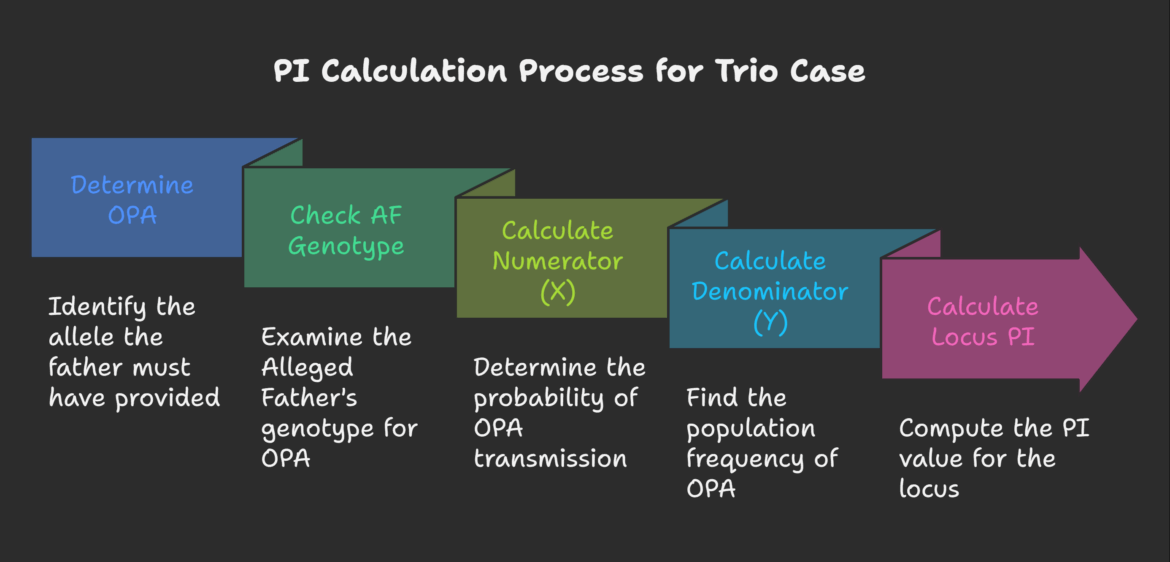
Locus-wise PI Calculation Process for Trio Cases
- Determine OPA: Compare Mother & Child genotypes to identify the allele the father must have provided.
- Check AF: Examine the Alleged Father’s genotype. Does he possess the OPA? If no, record an Exclusion (PI=0) for this locus.
- Calculate Numerator (X): If not excluded, determine the probability the AF transmitted the OPA based on his genotype (X=1 if homozygous for OPA; X=0.5 if heterozygous).
- Calculate Denominator (Y): Find the population frequency of the OPA (pOPA) from the appropriate reference database.
- Calculate Locus PI: Compute PI = X / Y.
Note
This basic flow applies to straightforward cases and assumes standard Mendelian inheritance without complexities like mutation
Population Genetics in Calculations
The accuracy of paternity index (PI) and likelihood ratio (LR) values heavily relies on the correct application of population genetic principles.
Allele Frequencies & Databases:
Allele frequencies, critical for calculations like Y, are derived from reference databases compiled by sampling specific populations. The database’s quality is vital and depends on:
- Representativeness: It must reflect the genetic diversity of the relevant population. Using data from genetically different groups introduces biasThe difference between the expectation of the test results and an accepted reference value. Read Full Definition.
- Sufficient Size: Large sample sizes (hundreds to thousands) ensure stable and reliable frequency estimates, especially for rare alleles. Small databases risk inaccuracies.
- Stratification: Human populations are structured, with frequencies varying between ancestral groups (e.g., European, African, East Asian). Major databases provide stratified data accordingly.
- Appropriate Selection: The database should match the assumed ancestry of the Random Man (RM). If ancestry is unknown, multiple databases may be used, with the most conservative (lowest PI) result reported to avoid overstating evidence.
The accuracy and validity of PI and LR values are critically dependent on the appropriate use of population genetic data and principles.
Handling Rare Alleles:
Alleles observed very infrequently in database samples have highly uncertain frequency estimates. Simply using the observed low frequency can artificially inflate PI values. To counteract this, minimum allele frequency thresholds (e.g., the “5/2N rule” or other counting methods) are often applied, ensuring that even rare alleles are assigned a minimum plausible frequency based on the database size, leading to more conservative and robust results.
Hardy-Weinberg Equilibrium (HWE):
HWE (p² + 2pq + q² = 1) provides a baseline for estimating genotype frequencies from allele frequencies in an idealized population, such as a large, random-mating population with no mutation. Although real populations are not perfect HWE models, they remain a reasonable approximation for forensic calculations.
Population Substructure & Theta (θ) Correction:
Even within stratified groups, subtle substructures exist, leading to excess homozygosity. Ignoring this can lead to overestimating PI/LR values. Theta (θ) correction (related to the fixation index FST) adjusts the genotype probability calculations to account for this effect (e.g., P(AA) ≈ p² + p(1-p)θ; P(Aa) ≈ 2pq(1-θ)). Applying this correction (using appropriate θ values, such as 0.01 for broad populations or 0.03 for more isolated ones) provides more conservative and accurate results, particularly important when calculating Y.
Handling Complex Scenarios
While the basic trio calculation is standard, real-world cases can present complexities that require modified approaches.
Mutations:
Genetic mutations are rare, spontaneous changes in the DNA sequence that occur during inheritance. For example, an STR allele might gain or lose a repeat unit during the formation of sperm or eggs.
Mutations at STR loci present significant challenges for kinship analysis. Studies reveal that paternal mutations occur substantially more frequently than maternal mutations (75.60% versus 2.435%). Typical STR mutation rates are low, often ranging from 1 in 100 down to less than 1 in 10,000 per locus per generation, varying by locus and allele. For example, Penta E demonstrates comparatively high mutation rates.
If a mutation is considered a plausible explanation (usually only when one locus is inconsistent among many), the PI calculation for that locus is adjusted. The Numerator X incorporates the estimated mutation rate (μ) for the specific change observed:
X ≈ μ × P(AF transmits pre-mutation allele).
This results in a low PI value for that locus (because μ is small), but crucially, it is non-zero.
How do these mutations affect test outcomes? Typically, mutation events drastically reduce the Paternity Index (PI) value. In documented cases, mutations reduced PI from what it should have been, 99.9999%, to 99.8690%. This occurs because:
- Mutations can cause false negatives in kinship relationships
- Child-parent mismatches at one locus are generally attributed to mutations
- Two or more exclusions are usually required to rule out paternity
These factors highlight the importance of forensic experts considering mutation rates when analyzing kinship test results, especially in cases where there are isolated mismatches at specific loci. This indicates that the evidence supporting paternity is considerably diminished due to the inconsistency; however, the potential for paternity cannot be entirely dismissed if a mutation has occurred. To ensure precise"Precise" refers to the degree of closeness or consistency between multiple measurements or values taken under the same conditions. It indicates how well these measurements agree with each other, regardless of whether they are accurate Read Full Definition calculations, it is essential to utilize dependable data regarding locus- and allele-specific mutation rates.
Degraded and Limited DNA Samples
Forensic kinship and paternity testing often involve challenging samples with degraded or limited DNA. Since bones and teeth are often the only biological materials remaining after exposure to environmental conditions, intense heat, or certain traumatic events, and in cases where a significant amount of time has passed since the individual’s death, the ability to purify large quantities of informative DNA from these hard tissues is beneficial. Understanding the factors that affect DNA preservation is crucial, as sampling hard tissues for genetic analysis is a destructive process.
Various approaches have been developed to address the challenges of degraded DNA. Single-nucleotide polymorphisms (SNPs) offer promise for supporting forensic DNA analyses due to their abundance of potential markers, amenability to automation, and potential reduction in required fragment length to 60-80 bp. The SNP markers serve an essential role in analyzing challenging forensic samples, such as those that are highly degraded, in augmenting the power of kinship analyses and family reconstructions for missing persons and unidentified human remains.
The application of massively parallel sequencing has been particularly valuable for degraded samples. Due to the high throughput of MPS, a variety of biometric markers can be typed using a single sample, allowing more relevant information to be obtained from limited-quantity and quality samples. In a case study of 140-year-old human skeletal remains, results were obtained for 25/26 Y-STRs, 34/34 Y SNPs, 166/166 ancestry-informative SNPs, 24/24 phenotype-informative SNPs, 102/102 human identity SNPs, 27/29 autosomal STRs (plus amelogenin), and 4/8 X-STRs (as well as ten regions of mtDNA), demonstrating the power of MPS for challenging samples.
Probe capture methods provide an alternative to PCR for samples that are degraded. Target enrichment using probe capture rather than PCR amplification offers advantages for analyzing degraded DNA, as two intact PCR primer sites in the template DNA moleculeA molecule is a fundamental unit of matter composed of two or more atoms that are chemically bonded together. It is the smallest possible amount of a particular substance that retains all of the unique Read Full Definition are not required. Additionally, NGS software programs can help remove PCR duplicates to determine the initial template copy numbers of a shotgun library. The same shotgun library, prepared from a limited DNA source, can also be enriched for mtDNA as well as nuclear markers by hybrid capture using the relevant probe panels.
Motherless Paternity Testing
Motherless paternity testing—where the mother’s DNA is unavailable—presents significant challenges in forensic kinship analysis. Although there is a growing demand for such testing due to its cost and logistical advantages, the accuracy and reliability of motherless tests have raised concerns.
Research on 6,182 paternity trio cases demonstrated that omitting the mother’s DNA can lead to critical errors. When mothers were excluded, 2.5% of cases involving excluded putative fathers would have been falsely included. These false positives are primarily due to coincidental sharing of short tandem repeat (STR) loci between the mother and the putative father.
To mitigate these risks, expanding the number of STR loci analyzed may help, but this approach requires rigorous evaluation to confirm that it sufficiently addresses coincidental matches. Based on current findings, the mother’s participation in testing is strongly recommended unless absolutely impossible, such as in cases of death, to avoid serious legal consequences arising from false inclusions.
In scenarios where the mother’s sample is unavailable, the probability of paternity (PI) calculations becomes significantly more complex. Without the maternal DNA, the paternal allele cannot be directly determined, complicating the statistical models. Analysts must then account for all possible maternal allele contributions, weighting each by its frequency in the relevant population. This necessity makes both the Numerator, X = P(Child|Alleged Father), and the Denominator, Y = P(Child|Random Man), dependent on summing probabilities across multiple possibilities, substantially increasing calculation complexity.
Motherless cases demand the use of validated, specialized software or established, published formulas to ensure reliable and accurate results.
Additionally, even when both the mother and child share the same heterozygous genotype (e.g., M = 10,11; C = 10,11), ambiguity remains regarding which allele the father contributed. Similar to motherless testing, resolving such scenarios requires specific statistical formulas that account for all possible inheritance paths.
Ultimately, while motherless paternity testing is feasible, it carries significant analytical and legal risks, underscoring the importance of careful statistical handling and, whenever possible, including the mother in the analysis.
Identical Twins
Differentiating between identical twins presents one of the most challenging scenarios in forensic DNA analysis. Monozygotic twins arise from a single fertilized egg and are practically genetically identical. Therefore, in cases where one of the identical twins is associated with forensic biological evidenceBiological evidence - physical evidence such as bodily fluids that originated from a human, plant or animal. Read Full Definition through DNA typing, the other twin cannot be excluded either. This creates the ultimate “my brother did it” scenario, placing the legal community in a difficult position.
Despite the challenges, genetic differences do exist between identical twins. It has been well-known for many years that there are genetic differences between such twins due to the accumulation of somatic mutations. A few somatic DNA differences between twins are the norm, not the exception. Somatic mutations occur randomly, so it is extremely unlikely, if not impossible, that identical twins would share the same somatic mutations. These mutations, thus, potentially can serve as genetic markers to distinguish identical twins.
Advances in massively parallel sequencing (MPS) have made it possible to identify these rare genetic differences. Until recently, finding these few somatic mutations was not feasible on a routine basis and was very technically demanding.
Over the last decade, the advent of MPS has made it possible to perform large-scale sequencing, in which whole human genomes can be sequenced in a relatively short time frame. While much effort is being dedicated to the application of MPS in forensic DNA analysis, it is still considered by most to be in the development and validation testing phases and is not being used in casework analyses.
A practical approach to differentiating identical twins has been demonstrated. The implications of these findings for forensic investigations involving twins as the potential source is remarkable. In a sexual assault case, where semen is discovered, typed by standard DNA markers, and a “match” is observed between the evidence and an implicated twin, the primary question of differentiation of the twin who is the donor of the semen evidence can be resolved. The process involves using MPS not on the evidence but solely on reference samples to develop the investigative lead for identifying target SNPs. Once genetic variants are identified, typing of the evidence and the reference samples of the identical twins would be carried out using similar methodology, which has been generally accepted for sequencing of mitochondrial DNA for almost two decades, i.e., targeted PCR and Sanger sequencing.
Distant and Complex Relationships
Kinship testing faces significant challenges when analyzing distant or complex relationships. Beyond second-degree relatives, reliability declines sharply—fifth-order relationships, sharing around 3.1% of genetic material, often cannot be distinguished from unrelated individuals. Detecting distant relationships, such as first cousins, requires significantly more genetic data, approximately 1,858 loci for acceptable verification, compared to 85 loci for paternity, 127 loci for full siblings, and 491 loci for half-siblings.
Population stratification—genetic differences across populations—further complicates interpretation. Although high-density SNP panels, which analyze around 800,000 markers, offer promise for improving the detection of distant relationships, these technologies still require forensic validation.
In complex cases, such as missing person investigations, simple pairwise comparisons between DNA samples are often insufficient. Greater power is achieved by considering the entire family pedigree, as related individuals are genetically dependent. Pedigree likelihood ratios (LRs) offer a more comprehensive framework by comparing the probability of DNA evidence under different relationship hypotheses. These models incorporate population substructure adjustments and mutation rates, following recommendations from the Second National Research Council (NRCII) Report. While mutations have a moderate effect on likelihood ratios (LRs), population substructure can significantly reduce match confidence.
To enhance accuracy, analyses often integrate data from the Y-chromosome and mitochondrial DNA. Software tools like MPKin facilitate the combined use of autosomal, lineage-based, and pedigree data, improving identification efforts in distant or complex kinship scenarios.
Combining Evidence and Final Interpretation
The analysis culminates in combining results across all tested loci and interpreting the overall findings.
Combined Paternity Index (CPI):
Evidence from multiple independent genetic loci is pooled by multiplying the individual locus PIs.
CPI = PI₁ × PI₂ × … × PIn.
This multiplication is statistically valid because the inheritance of alleles at unlinked loci (on different chromosomes or far apart on the same chromosome) is an independent event. The power of DNA testing comes from this multiplicative effect – even modest PI values at individual loci can combine to produce an overwhelmingly large CPI when many markers are used.
Interpreting CPI:
The CPI represents the overall Likelihood Ratio summarizing the entire genetic comparison. It quantifies how many times more likely the observed set of genetic data is if the alleged father is the true father, compared to if a random, unrelated man is the father.
Very large CPI values, often reaching into the thousands, millions, or billions, and sometimes even higher with modern STR kits (testing 20+ loci), provide extremely strong statistical support for paternity. Conversely, a CPI of 0 indicates a confirmed exclusion due to multiple genetic inconsistencies (or a single one if the mutation is not considered applicable).
Laboratories and accrediting bodies, such as the AABB, often provide standardized verbal scales or interpretive guidelines to translate CPI values into qualitative statements about the strength of evidence (e.g., “paternity is practically proven” for very high CPIs).
Probability of Paternity (POP):
While the CPI objectively quantifies the weight of the genetic evidence, some contexts require expressing the conclusion as an overall probability of paternity (POP), sometimes denoted as W. This requires incorporating prior assumptions about the likelihood of paternity before the DNA test, using Bayes’ Theorem:
Posterior Odds = CPI × Prior Odds.
The Prior Odds reflect non-genetic factors (e.g., testimony, circumstance, or simply an assumed neutral stance). A common practice, particularly in routine testing, is to assume neutral prior odds (Prior Odds = 1, equivalent to a 50% prior probability) for calculation purposes.
This yields the formula:
POP = CPI / (CPI + 1).
While POP provides an intuitive percentage (e.g., 99.99%), it’s crucial to recognize that it assumes a prior probability. Because assigning a prior can be subjective and outside the expertise of the genetics laboratory, many forensic guidelines recommend that scientists primarily report the objective weight of the genetic evidence (the CPI/LR), leaving the final integration with other case information and prior beliefs to the relevant decision-makers (e.g., courts, individuals).
Legal and Ethical Considerations
Legal Framework and Standards
The legal framework surrounding forensic kinship and paternity testing varies across jurisdictions but generally aims to ensure reliable and valid testing procedures. Internationally, various organizations have established standards and guidelines for testing. The International Society for Forensic Genetics (ISFG), the American Association of Blood Banks (AABB), the United Kingdom Forensic Science Discover the fascinating field of Forensic Science, the application of scientific principles to legal matters. This post delves into its many disciplines, from DNA analysis to crime scene investigation, its importance in the justice system, Read Full Definition Regulator (UKFSR), and various governmental departments have established relevant technical standards and guidelines for paternity and kinship testing, promoting standardization and regulation.
Discover the fascinating field of Forensic Science, the application of scientific principles to legal matters. This post delves into its many disciplines, from DNA analysis to crime scene investigation, its importance in the justice system, Read Full Definition Regulator (UKFSR), and various governmental departments have established relevant technical standards and guidelines for paternity and kinship testing, promoting standardization and regulation.
In court-ordered paternity testing, legal challenges often arise when individuals refuse to undergo testing. Legislative hesitance on compelling uncooperative parents and children has led to controversial judicial approaches. Courts vary: some claim they lack the power to order testing, while others argue it may not serve the child’s best interest, especially if results show the alleged father is not biological, potentially ending financial obligations. Conversely, another high court believes that discovering the truth serves the child’s best interest, allowing necessary scientific tests.
These inconsistencies highlight the need for clearer legal frameworks. The high courts may need to provide more consistency in their approach to ordering parents and children to undergo paternity tests, and legislative reform may be necessary to address this dilemma.
Quality ControlQuality control (QC) refers to a series of activities and measures conducted on individual laboratory tests or analyses to verify and ensure the accuracy and reliability of the results. QC is a reactive approach that Read Full Definition and Laboratory Standards
Quality control and adherence to laboratory standards are essential for reliable forensic kinship and paternity testing. Genotyping has become a cornerstone in the characterization of forensic biological evidence, performed using a variety of genetic markers. These markers are divided into two large groups: bi-allelic (single-nucleotide polymorphisms, or SNPs) and multi-allelic polymorphisms (variable number of tandem repeats, or VNTRs, and short tandem repeats, or STRs). Many countries worldwide have established forensic DNA databases based on autosomal short tandem repeats and other markers. For the DNA profile database to be helpful at a national or international level, it is essential to standardize the genetic markers used in laboratories.
The accuracy of forensic kinship testing is crucial due to its significant consequences. The complexity of statistical calculations, especially with many loci, population corrections (theta), potential mutations, or missing individuals, requires specialized software. These tools use algorithms based on population genetics and statistical models. Ensuring accuracy involves rigorous validation, including testing software against known cases, verifying algorithms, assessing performance under various conditions, and accurately implementing genetic models, such as mutation models.
The accuracy of results depends on high-quality input data, including precise genotype determination and reliable population allele frequency databases. The importance of these databases in accurately interpreting results is significant. Establishing the power of exclusion (PE) and combined match probability is vital for the tested population. For instance, research on Sudanese populations showed a population equivalent (PE) of 0.9999981 and a combined match probability of 1 in 7.4 × 10^17 using AmpFLSTR Identifiler microsatellite markers. This specific data is essential for accurately interpreting genetic findings.
Stringent quality assuranceQuality assurance (QA) is a comprehensive set of activities and processes to ensure the overall quality and reliability of the work conducted within a laboratory. QA is a proactive approach that focuses on improving scientific Read Full Definition protocols, adherence to international standards (ISO 17025), accreditationAccreditation – a process by which a laboratory must prove to an accrediting agency that their processes, equipment, and employees are competent, credible, and accurate. The accrediting agency will inspect the laboratory and observe its Read Full Definition (AABB for relationship testing), regular proficiency testing, and ongoing training are critical for ensuring the trustworthiness and scientific validity of forensic kinship testing results.
Broader Kinship Applications
While this guide has focused heavily on paternity testing, it’s important to remember that the underlying principles – analyzing shared DNA using genetic markers and evaluating the evidence using Likelihood Ratios based on IBD probabilities and population data – are broadly applicable to determining any potential biological relationship. Common applications beyond paternity include:
- Siblingship testing: Assessing if individuals are full siblings (share both parents), half-siblings (share one parent), or unrelated. LR calculations compare hypotheses based on the different expected kappa coefficient distributions for these relationships.
- Missing Persons Identification: Comparing DNA from unidentified human remains to DNA profiles from potential family members (parents, children, siblings) stored in databases or provided by families searching for loved ones.
- Disaster Victim Identification (DVI): Large-scale efforts following mass casualty events, often involving matching DNA from fragmented remains to multiple family references to establish identity statistically.
- Other relationships, such as testing for grandparentage, avuncular (aunt/uncle-niece/nephew), and cousin relationships, each require specific likelihood ratio (LR) calculations based on their unique expected inheritance distance (IBD) sharing patterns.
- Investigating historical relationships or identifying remains from archaeological contexts, often using specialized markers like mtDNA or SNPs suitable for older or degraded samples.
Note:
The specific LR calculations become progressively more complex for more distant relationships due to lower levels of expected IBD sharing and the increased number of possible genetic scenarios.
Conclusion
Forensic kinship analysis, and particularly paternity testing, exemplifies the powerful synergy between molecular biology and rigorous statistical evaluation. By analyzing highly informative DNA markers and applying the scientifically robust Likelihood Ratio framework (manifested as the Paternity Index), forensic scientists can objectively quantify the weight of genetic evidence regarding biological relationships.
Achieving accurate, reliable, and meaningful results requires a thorough understanding of Mendelian inheritance, the principles of Identity by Descent, population genetics concepts such as allele frequencies and population structure, and the appropriate statistical handling of complexities like mutations or missing data.
When performed under stringent quality standards using validated methodologies and software, forensic kinship analysis provides critical and objective evidence essential for informed decisions within the legal system. It aids forensic investigations and humanitarian efforts, and offers profound personal insights into human connections and identity. It stands as a vital application of scientific principles within complex legal and societal frameworks.









